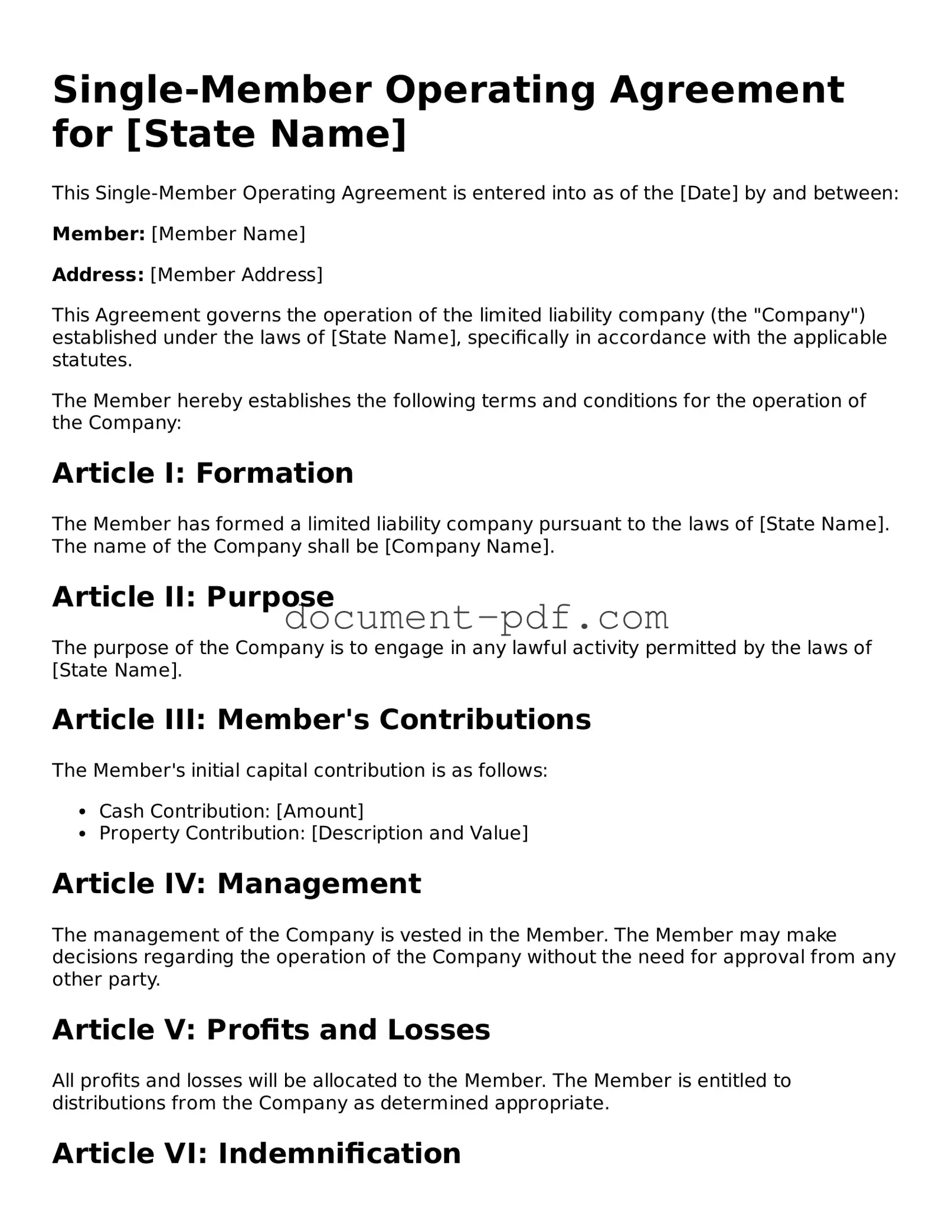Single-Member Operating Agreement for [State Name]
This Single-Member Operating Agreement is entered into as of the [Date] by and between:
Member: [Member Name]
Address: [Member Address]
This Agreement governs the operation of the limited liability company (the "Company") established under the laws of [State Name], specifically in accordance with the applicable statutes.
The Member hereby establishes the following terms and conditions for the operation of the Company:
Article I: Formation
The Member has formed a limited liability company pursuant to the laws of [State Name]. The name of the Company shall be [Company Name].
Article II: Purpose
The purpose of the Company is to engage in any lawful activity permitted by the laws of [State Name].
Article III: Member's Contributions
The Member's initial capital contribution is as follows:
- Cash Contribution: [Amount]
- Property Contribution: [Description and Value]
Article IV: Management
The management of the Company is vested in the Member. The Member may make decisions regarding the operation of the Company without the need for approval from any other party.
Article V: Profits and Losses
All profits and losses will be allocated to the Member. The Member is entitled to distributions from the Company as determined appropriate.
Article VI: Indemnification
The Company shall indemnify the Member to the fullest extent permitted under the laws of [State Name]. This includes any costs, expenses, or liabilities incurred in connection with Company activities.
Article VII: Amendment
This Agreement may be amended only in writing and must be signed by the Member.
Article VIII: Governing Law
This Agreement shall be governed by the laws of [State Name].
IN WITNESS WHEREOF, the Member has executed this Single-Member Operating Agreement effective as of the date first above written.
Member Signature: ______________________
Date: ______________________
